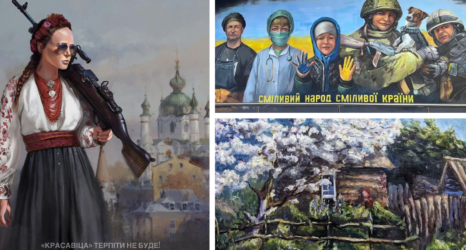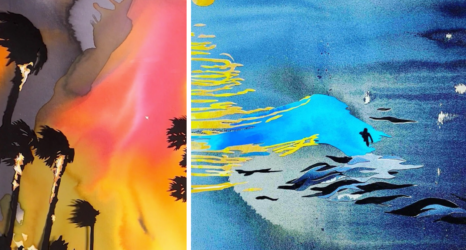Sister Corita Kent is a Pop Art pioneer too often erased from the annals of modern art history. Now, she’s taking center stage at an exhibition at Miami’s Patricia & Phillip Frost Art Museum at Florida International University. In the Beginning Was The Word, which opened Saturday and will remain on view until September 18, is part of a three-part program at the museum called The Summer of Women, lending space and attention to a wide range of female artists.
Kent’s journey to social justice-oriented art pioneer was unusual. She joined a Catholic convent in 1936—right after she completed high school—and served in the Immaculate Heart of Mary order in Los Angeles for three decades as a “rebel nun” and head of the art department. (She ultimately left the order to pursue art in Boston, feeling stifled by an archdiocese that did not always stand by her politicized service.)
In 1962, she took her students to a gallery exhibition for a man who, at the time, was little known: Andy Warhol. In response to viewing his now-iconic soup can paintings, Kent began a career in Pop Art that utilized logos and corporate slogans as backdrops in silkscreen pieces calling for world peace, civil rights and dissent. She was a feminist who weaved the words of Gertrude Stein, Martin Luther King, Jr. and even the Beatles into works that remain relevant in a time where the gains of the sixties and seventies are under attack.
“Her works reflect the activist ethos of the time and express her concerns about racism, poverty, and the Vietnam War,” Dr. Jordana Pomeroy, director of the Frost Art Museum, said in a press release. “She saw her calling to use art as a response to cultural discord and shifts in public sentiment. Corita Kent’s legacy as a Sister who sought to awaken social consciousness in the United States is exemplified by her dynamic colorful prints that continue to provoke discussion and promulgate sentiments about social iniquities that still exist in our society, half a century after their creation.”
Kent’s art did more, though, than simply spark conversation. Her works were frequently spotted at protests in the sixties and seventies, where activists carried them as protest signs. She herself also walked the walk of activism by designing posters and billboards for organizations like Amnesty International, the International Walk for Hunger and Physicians for Social Responsibility in order to lend a hand to the movements that defined her career.
“She was directing people,” Alexander Carrer, director of the Corita Art Center in Los Angeles, told NPR. “And rather than just standing back and being like, ‘This is what’s going wrong, and I’m just showing you guys because I’m so cool and I’m not going to be part of it,’ she was really asking people to engage. And I think that that is a more popular message today than it was 20 or 30 years ago.”
Despite her contributions to not only the art world but cultural conversations at-large, Sister Corita is often left behind in conversations about Pop Art, and even when her career was reaching a fevered peak she remained on the fringe of the male-dominated art movement. As a woman in the arts, she was already at a disadvantage; as a woman of the cloth, she stood in even starker opposition to the art world’s typical heroes: Men.
“An ‘artist’ was from New York,” Ian Berry, who co-curated a retrospective of her work at the Andy Warhol Museum in Pittsburgh, said in an interview with NPR. “They were a man; they were an epic, abstract painter. And she wore a habit—she just didn’t look like what the, sort of, movie version of an artist looked like.”
Art historian Susan Dackerman made the same point in Harvard Magazine. “Corita Kent in her habit couldn’t very well go hang out at The Factory with Warhol,” she told Jonathan Shaw. “There wasn’t really room in Pop art’s macho style for women artists.”
Nevertheless, Sister Corita and her work endure—and 50 years after some of her most important pieces made their original debut, she’s finally getting her due.
Photos are all from the Corita Art Center.





